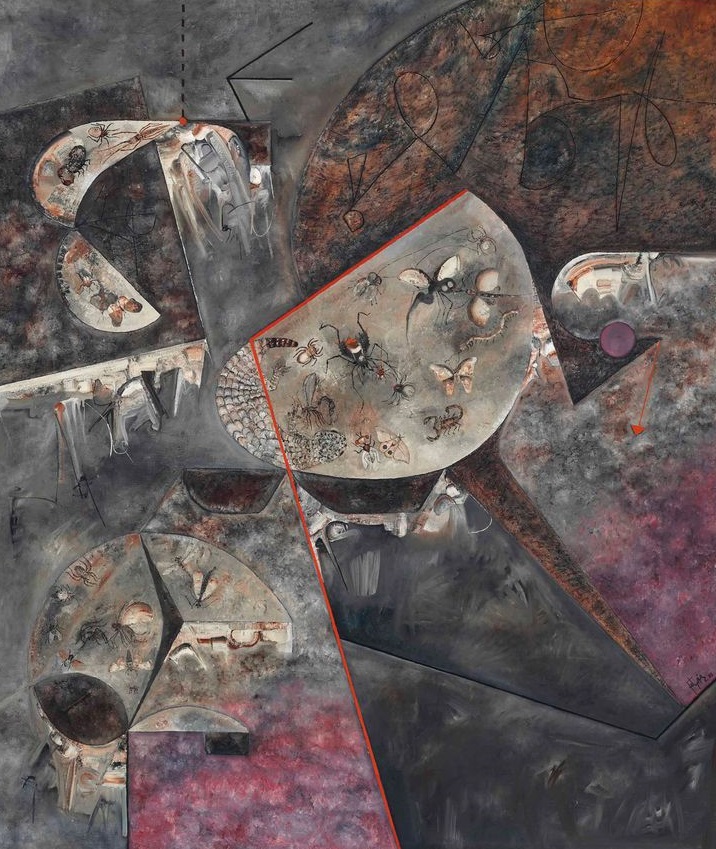Ram Kumar (1924 – 2018) was an Indian artist and writer who has been described as one of India's foremost abstract painters.He was associated with the Progressive artists' group along with greats like M.F. Hussain, Tyeb Mehta, S.H. Raza.He is said to be one of the first Indian artists to give up figurativism for abstract art. His art commands high prices in the domestic and international market. His work "The Vagabond" fetched $1.1 million at Christie's, setting another world record for the artist. He is also one of the few Indian Modernist masters accomplished in writing as well as painting. "At the onset of what is known as “phase of alienation” in Ram Kumar’s paintings, something was happening very quietly, almost imperceptibly. The figure, which played so important a role in the entire drama of his odyssey, was already being a retreat, slowly, hesitantly, receding into the margins, almost merging with the dark greys and browns of the horizons. And what till then only vaguely lurked in the background, occupy the central stage. It is significant that at this stage when Ram Kumar takes a decisive step into what is known as the non-figurative world of abstraction, he also bids farewell to the literary moorings and its expressionistic entourage. Without negating the writer in him, he begins to travel light as a painter. Poetry is still there, with all its lyrical ardour and dramatic intensity but now it acquires a kind of austere brilliance, a certain ascetic purity which can be vividly seen in his Varanasi paintings. But more than its technical innovations, the so-called abstract phase was an attempt to resolve a deeper problem which seemed to trouble Ram Kumar at his fateful juncture. At the later stage, nature came both as a release from his past and a return to it. Simla with all its mountains have called Ram Kumar many time which led to his return. It was in his stories that they made a strong presence, not merely as a setting for background but as an integral part of the fictional landscape. Also a nostalgic longing for a past gone for ever. They also symbolized peace and inner security, as if by returning to them, one can salvage a spark of happiness from the ruins of one’s adulthood."/ram-kumar.com/

.jpg)
.jpg)
.jpg)
.jpg)
.jpg)
.jpg)


.jpg)
.jpg)
.jpg)
-Acrylic%20on%20Paper-1996.jpg)
.jpg)
.jpg)
.jpg)

55.jpg)


89.jpg)
333.jpg)
666.jpg)






ml.jpg)

















